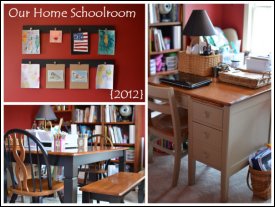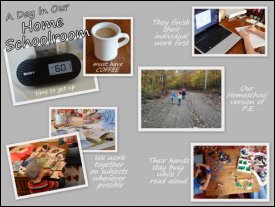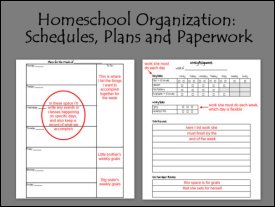Nature Study ~ Focusing on Insects and Spiders
We enjoy nature study using the gentle leading from Barb at the Handbook of Nature Study blog. When I purchased her “Getting Started” ebook and read in Challenge #4 about picking a focus area the idea made so much sense! When her September newsletter came out with a focus on insects and I saw that arthropods were coming up in our formal science curriculum, picking our first focus area was easy: Insects & Spiders.
I gathered related books, field guides and flashcard sets, our magnifying glasses, some specimens (purchased in acrylic and ones we’ve collected in jars). I placed all these items on a sofa table that I dubbed our “Nature Table.” The kids were intrigued and I saw a lot more handling of the specimens and flipping through the books with them all on display. It also made it easy to identify bugs we saw with all the insect books in one place.
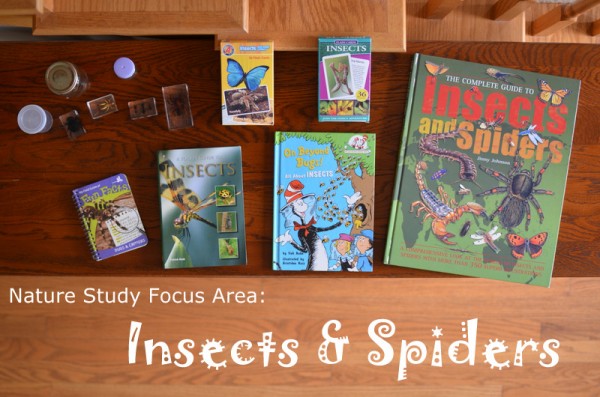
Using the September newsletter planning chart I mapped out topics I hoped to cover. She said picking a focus area helped her family learn much more in their area of concentration and that they would see more of whatever item they were focusing on, and I found this to be true in our family. Here are some of our nature study highlights for the month:
- We did a lot of reading, finally going through all the wonderful introductory pages in our Complete Guide to Insects and Spiders book.
- We watched some great videos. We always watch the YouTube links in Barb’s Outdoor Hour Challenge posts because we can see things we don’t have the good fortune of observing, like a spider spinning a web or cricket making it’s “music.” National Geographic Kids also has fun short videos and slideshows.
- We went on focused bug hunts, but also found ourselves pointing out insects to each other everywhere we went! Sometimes it seemed like insects and spiders were just waiting to be observed by us.
- Barb’s September grid gave us some things to look for on our nature walks. We found insects of many different colors, looked for ways they camouflage themselves, watched bees, and turned over rocks and logs. One of the challenges also involved looking at things through a bug’s eye view, which my son thoroughly enjoyed.
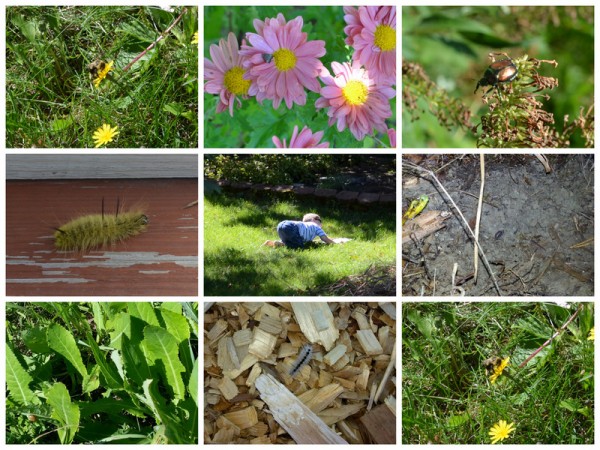
- This large spider is the perfect example of why a nature study focus area worked well for us. This exit door we’ve walked by a hundred times, but last week I noticed this spider and we stopped to observe and take photos. We admired her web (and knew it was an orb web after our studies). The most exciting part was searching all around for her children after reading about how the young spiders cast out on a line of silk in the wind. A few were in the same window! We then went outside and searched around the building, finding lots more smaller spiders that looked just like her.
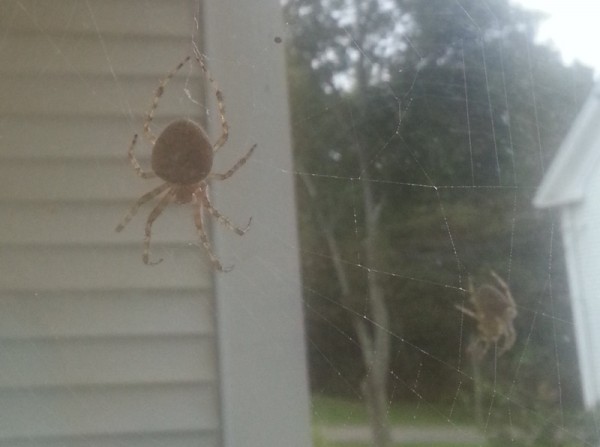
- We went on a few bug hunts in our backyard. We placed a Japanese Beetle and earwig in jars and the kids both completed a notebooking page (free from Primary Possibilities) for their journal. My daughter loved the organized format, once again my son preferred the blank page and just turned his over to draw on the back! That’s the beauty of notebooking: flexibility.
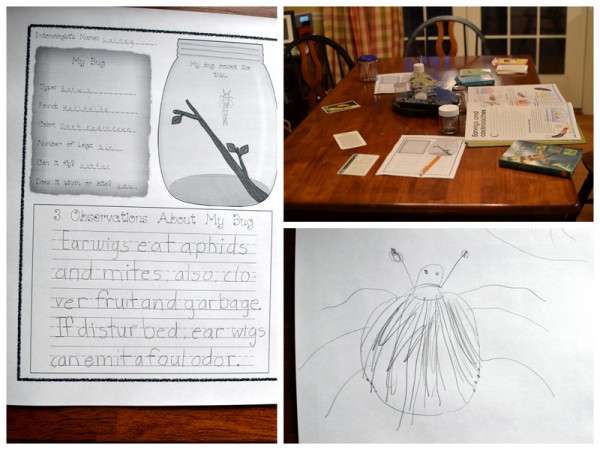
I’m not ready to wrap up this area yet–I’d like to talk about grasshoppers and flies. Barb mentioned spending six to eight weeks on one focus area and I think that will be a good time frame for us. At four weeks we still have more I’d like to cover, but after a couple more weeks we’ll be ready to move on.
Have you tried having a focus area for your nature study?
 Hi, I'm Heidi and I homeschool my two sweet kids. I want them to know that learning is an exciting lifelong adventure! We love great books, unit studies, notebooking, lapbooking, and hands-on learning.
Hi, I'm Heidi and I homeschool my two sweet kids. I want them to know that learning is an exciting lifelong adventure! We love great books, unit studies, notebooking, lapbooking, and hands-on learning.